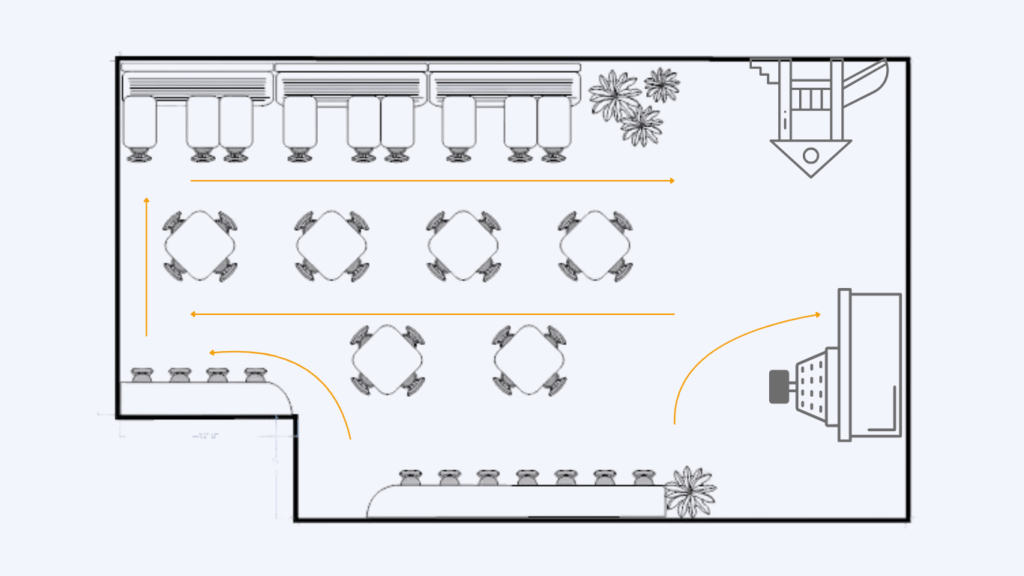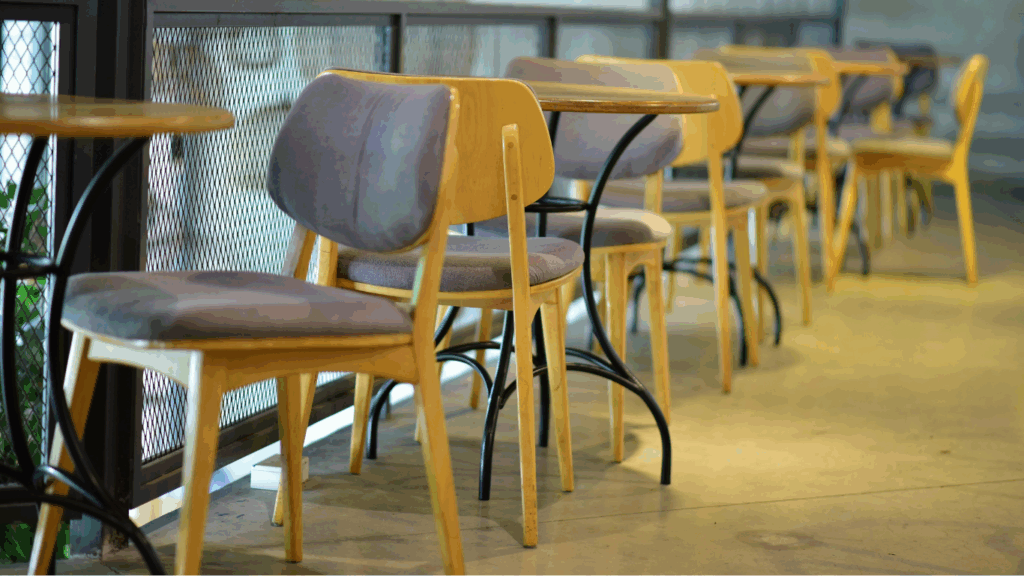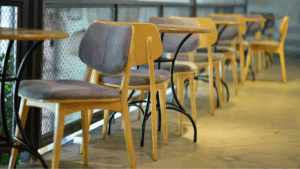Is Your Restaurant Seating Setup Costing You Money?
You might be losing money every single day—and not because of bad food or poor service. The real problem could be your tables.
Many restaurant owners spend time perfecting menus, training staff, and running promotions. But few stop to consider the impact of one key element: the seating layout. How your tables and chairs are arranged plays a huge role in guest comfort, staff efficiency, and overall profitability.
In this blog, we’ll break down how poor seating layouts cost money, signs your current setup needs help, and simple strategies to boost revenue, all without major renovations.
1. How Seating Mistakes Drain Profit
When your layout isn’t functional, it leads to:
-
Slower service: Cramped walkways make it hard for servers to move smoothly.
-
Empty tables, long waits: Guests often see empty tables but are told to wait—because those tables are in awkward or unpopular spots.
-
Lower turnover: Large tables used for small groups slow everything down.
-
Frustrated guests: Noisy, crowded areas or lack of privacy leads to bad reviews and fewer repeat visits.
Let’s look at the most common seating mistakes:
| Mistake | Impact | Fix |
|---|---|---|
| Tight aisles | Staff bumping into each other, slow service | Maintain at least 36 inches of aisle space |
| Oversized tables | Wastes space during busy times | Use 2-seaters that can be joined for groups |
| Bad visibility | The host can’t spot empty tables easily | Use a clear, open floor plan |
| Neglecting solo diners | Missed revenue opportunities | Add bar seating or window counters |
| Static layouts | Can’t adjust for large parties or events | Choose light, movable furniture |
👀 2. Signs Your Layout Isn’t Working
If you notice any of the following, it’s time to make changes:
-
Guests often shift chairs or avoid certain tables
-
Servers are always navigating around tight corners
-
Families struggle to fit strollers or high chairs
-
You see long lines, even when tables are visibly open
-
Some tables never get picked by walk-ins
-
Noise levels feel high, making guests uncomfortable
3. Quick Changes That Can Increase Revenue
Good seating isn’t just about looks. It’s about strategy and flow. Here’s what you can do today:
✅ Create Functional Zones
Divide your restaurant into zones for different guest needs:
-
Solo guests: Counter seating, bar stools, or window-facing tables
-
Couples: Small, cozy tables spaced for comfort
-
Families: Booths or round tables with space for high chairs
-
Groups: Flexible areas where tables can be rearranged easily

✅ Use the Right Furniture
-
Pick square or rectangular tables over round ones—they combine better when needed
-
Choose stackable or lightweight chairs to move around during rush hours
-
Avoid heavy booths unless they serve a purpose like adding privacy
✅ Optimize Flow
-
Ensure walkways are clear and wide enough
-
Keep service stations accessible without interrupting guest space
-
Avoid placing tables near kitchen doors, bathrooms, or cold drafty areas
4. Mini Quiz: Is Your Seating Helping or Hurting?
Answer these quick questions:
Q1. Do guests often wait while there are visible empty tables?
Q2. Do your staff complain about tight spaces?
Q3. Do customers avoid certain tables every time?
Q4. Do you have fewer tables filled during peak hours?
If you answered YES to 2 or more, your layout might be hurting your business.
5. Real Numbers: Why Seating Efficiency Matters
Let’s say you have 50 seats and each customer spends 2000 pkr.
-
If poor layout limits you to 2 seatings per table in a night:
50 x 2 x 2000 = 200000 pkr -
But if a better layout boosts this to 3 seatings per table:
50 x 3 x 2000 = 300000 pkr
That’s a 100000 pkr increase in daily revenue, just by changing how you arrange furniture.
Over a month, that’s 3000000 pkr
Small tweaks. Big difference.
6. Pro Tips for Smart Layouts
Here are the layout tips used by top restaurants to optimize thier restaurant seating setup :
-
Use a table map app or tablet system to manage seating better
-
Review your layout every 6 months or after major seasonal changes
-
Do a walkthrough during busy times to spot bottlenecks
-
Train hosts to seat guests based on table sizes, not first available
-
Track average dining times per table to optimize seat usage
7. Frequently Asked Questions (FAQs)
Q: What’s the best layout for a small restaurant?
A: Use wall-mounted counters, foldable tables, and chairs that tuck easily under the table. Maximize corners and vertical space.
Q: How often should I review my layout?
A: Every 6 months or after holidays, seasonal menu changes, or customer feedback.
Q: Should I hire an expert to redesign my floor plan?
A: Not always. Begin with small adjustments based on feedback, traffic flow, and space utilization. If you still struggle, consult a hospitality designer.
Q: What’s a good table-to-seat ratio?
A: For casual dining, aim for 12–14 square feet per seat. Fine dining needs about 18–20 square feet per guest.
Conclusion: Your Layout = Your Profit
Your seating setup is not just about interior design. It is a profitable tool. The wrong arrangement can cost you thousands every month. The right one can increase your revenue, improve guest satisfaction, and make staff more efficient.
Take time to analyze your space and restaurant seating setup. Use customer feedback. Walk through your dining area during peak hours.
Small shifts in your tables can lead to big gains in your numbers.
🔔 Want More Tips?
Follow DinePro for weekly updates on restaurant operations, design strategies, and growth tips tailored for busy restaurant owners like you. You are a restaurant owner and want to scale. Sign up for DinePro and manage your inventory online. DinePro is an all-in-one restaurant management and POS solution built to simplify operations, delight customers, and help your business grow. From real-time order tracking to smart billing, reservations, and delivery management—DinePro keeps everything seamless.




